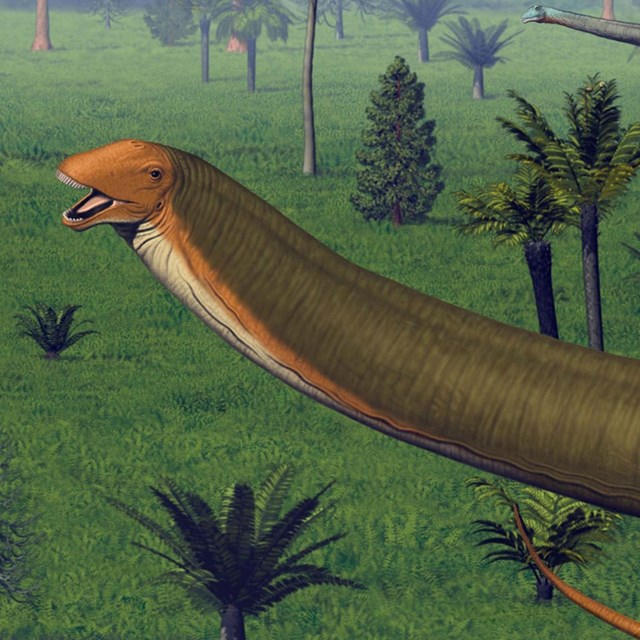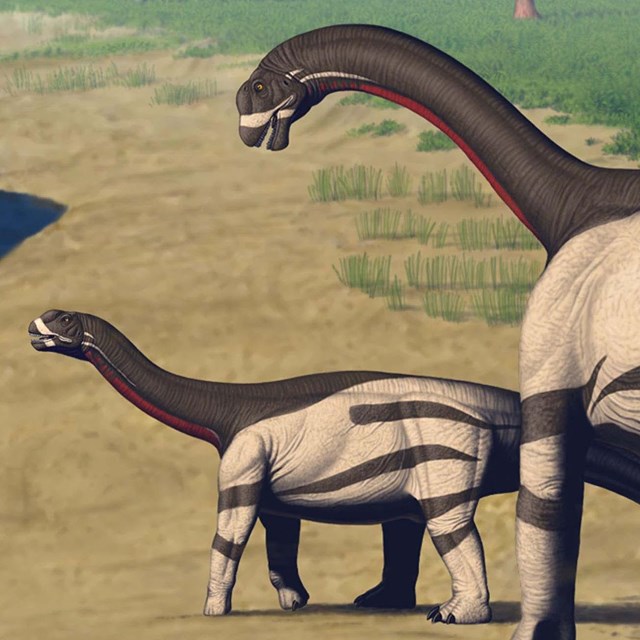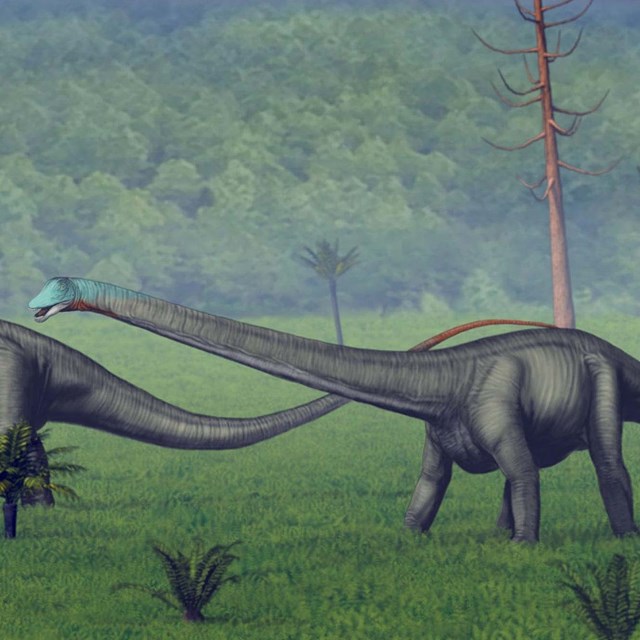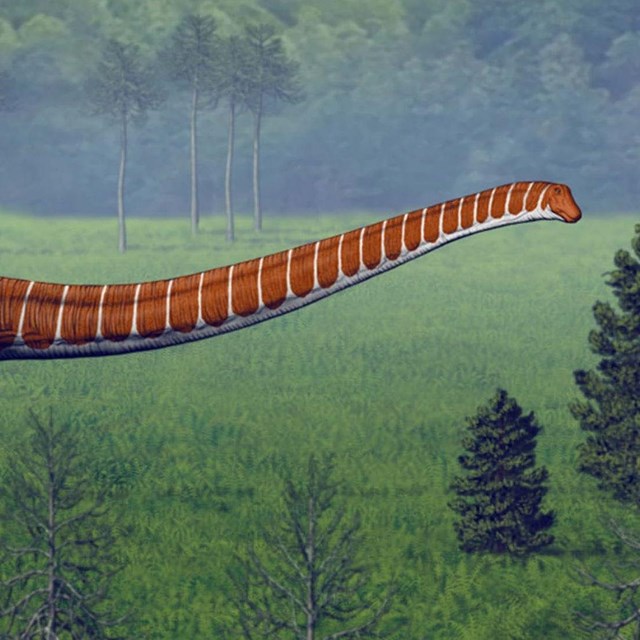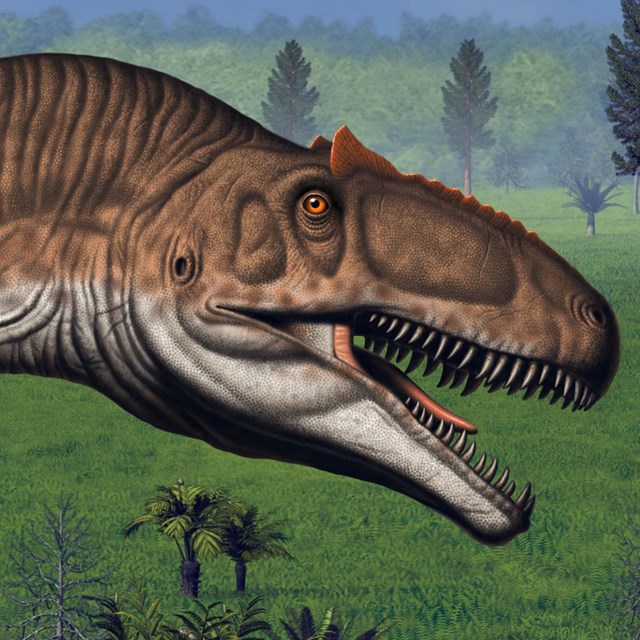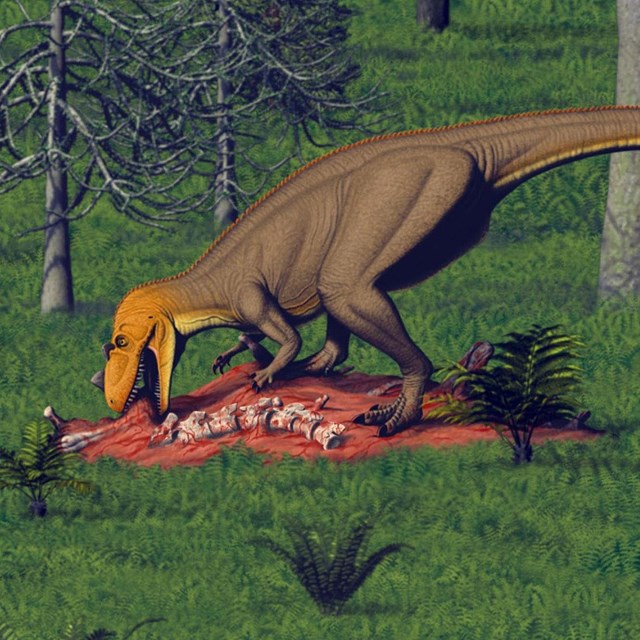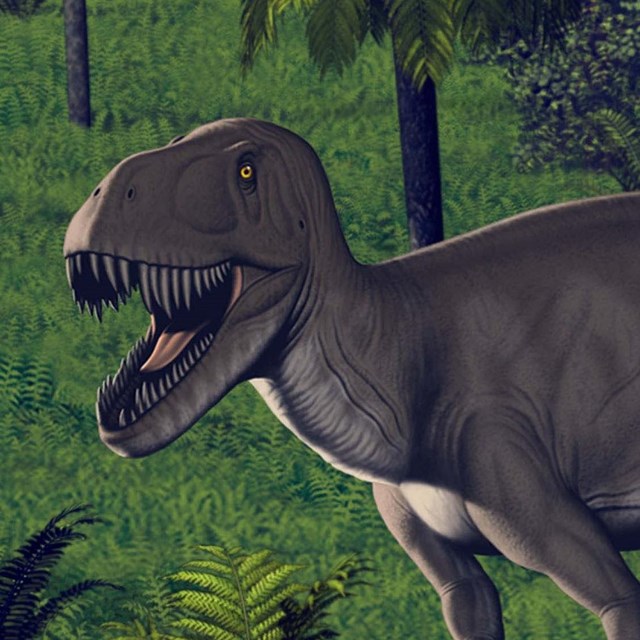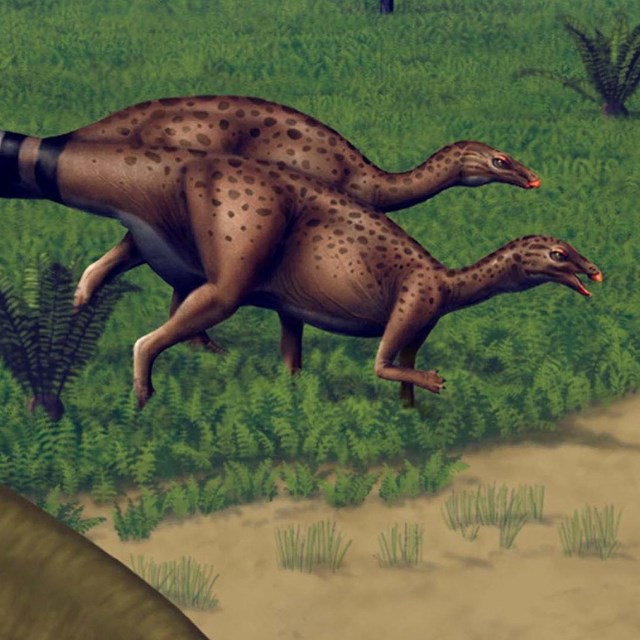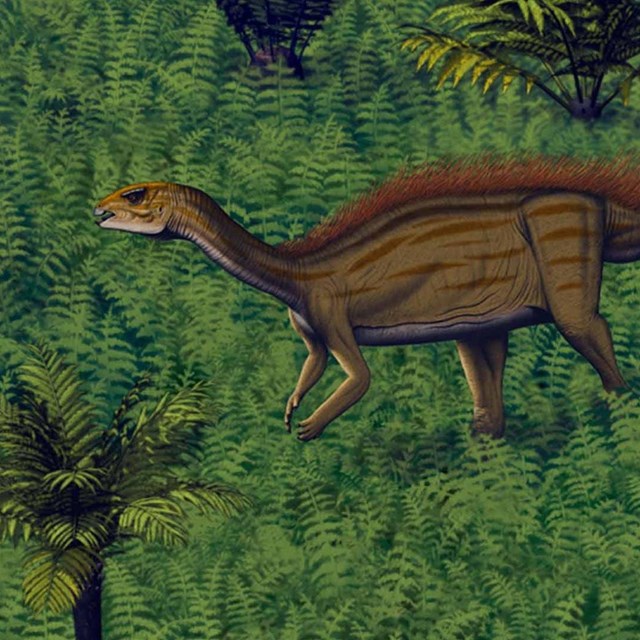
NPS / Bob Walters and Tess Kissinger The Morrison EcosystemThe dinosaurs of the Carnegie Quarry were found in the Brushy Basin member of the Morrison Rock Formation. Today, that rock layer is made of sandstone, but back in the Late Jurassic Period (about 150 million years ago), it was just sand. At that time, northeastern Utah was home to a vast, flat floodplain. Fossilized unionid clams in the rock layer provide evidence that a system of braided freshwater rivers flowed through this area. Fossilized cycads and ferns indicate that the climate was wamer and more humid than it is today. Dinosaurs roamed the landscape, but they weren't alone. Mixed among the huge bones, scientists have found evidence of the dinosaurs' contemporaries, who shared their lush habitat. These included frogs, salamanders, crocodilians, turtles, and even small mammals.Types of DinosaursDinosaur National Monument was home to many kinds of dinosaurs. All dinosaurs are traditionally grouped into two categories. There's the ornithischians, which means "bird hipped," and the saurischians, which means "lizard hipped." Ornithischians feature a hip structure resembling that of modern-day birds, where both the pubis and ischium bones point backward at a slightly downturned angle. Saurischians, on the other hand, tend to have hips that resemble those of modern-day lizards. In saurischians, the pubis bone usually points forward and down. All sauropods and theropods belong to the saurischian order of dinosaurs, even though some theropods did evolve a more bird-like hip structure later on. The interactive image below shows the difference between saurischian "lizard-like" hips and ornithischian "bird-like" hips. Drag the middle arrow up and down to see each hip type.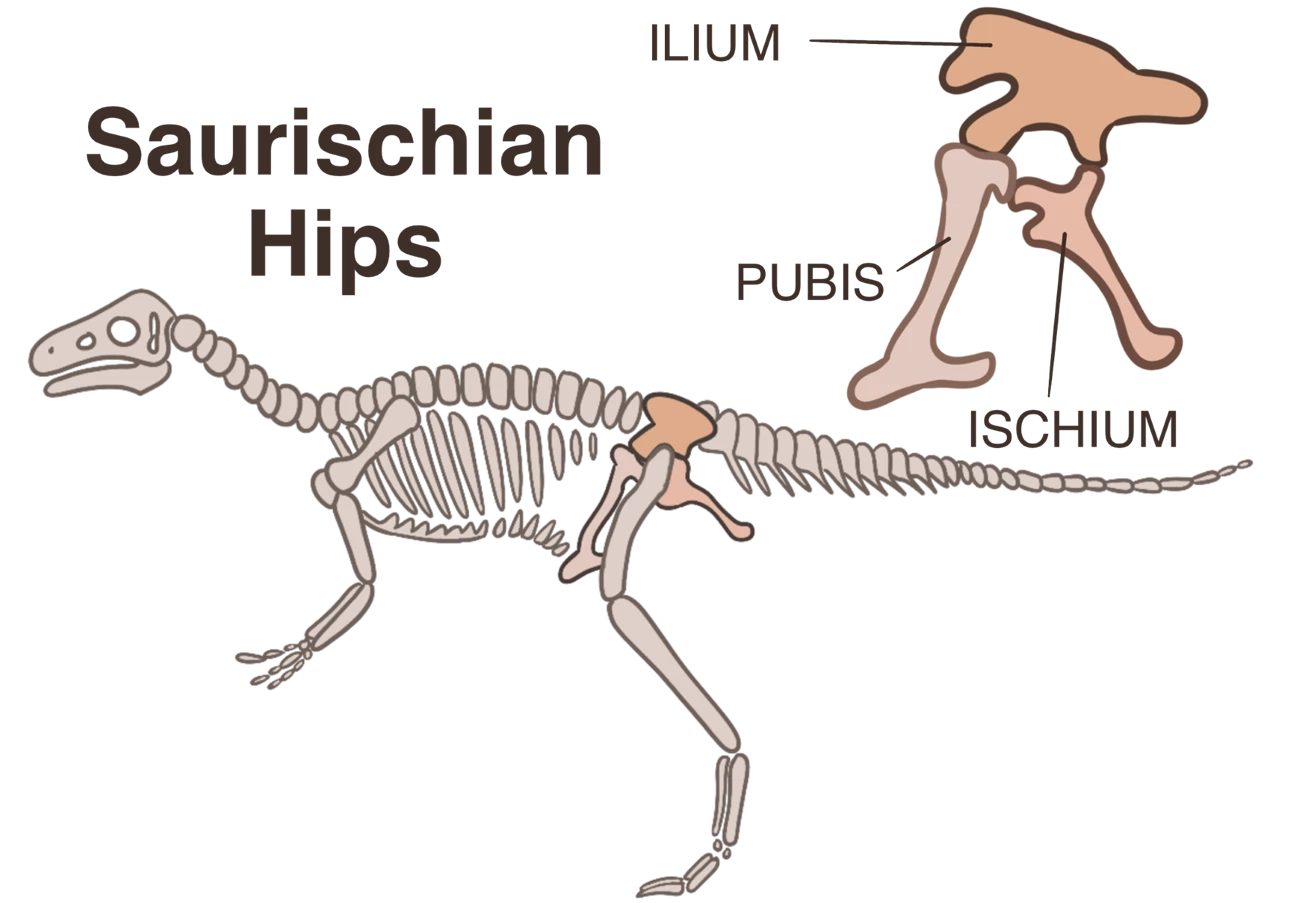
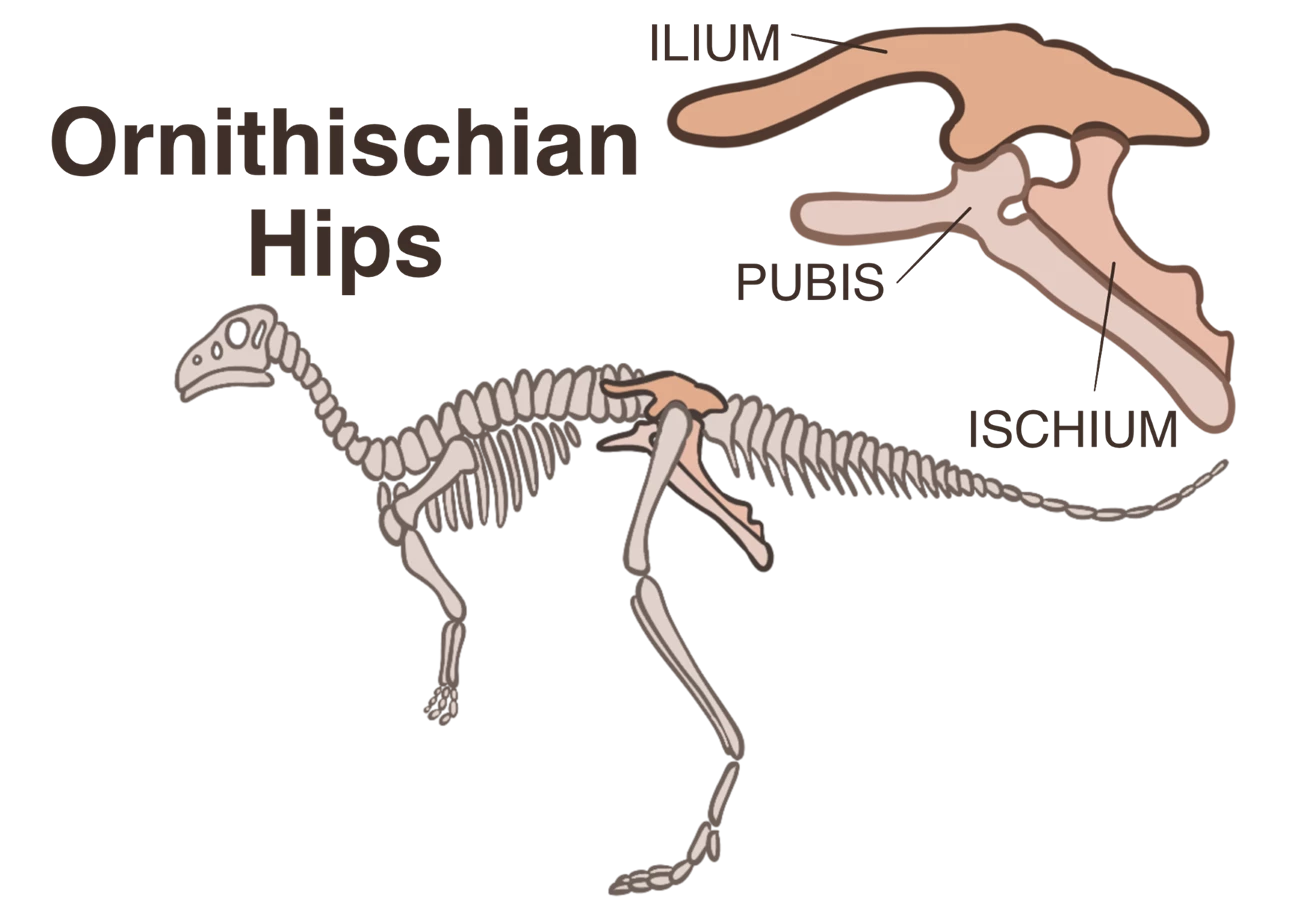
Top image
Bottom image

NPS / Molly Swindle SauropodsWhen most people think of a dinosaur, they picture a huge plant-eating reptile with a long neck, long tail, and 4 pillar-like legs. Dinosaurs that meet this description are almost always members of the sauropod group. All sauropods belong to the saurischian (lizard hipped) order of dinosaurs. Sauropods are the most common type of dinosaur found in the Carnegie Quarry. Because they were so big and sturdy, their bones were much more likely to survive the fossilization process than those of smaller, frailer animals. The Quarry Exhibit Hall contains the fossilized remains of several Late Jurassic sauropods. These were Apatosaurus, Camarasaurus, Diplodocus, and Barosaurus.
NPS / Molly Swindle TheropodsLike sauropods, theropods are also members of the saurischian (lizard hipped) order. When you think of a vicious meat-eating dinosaur, you're most likely thinking of a theropod. These dinosaurs usually walked on two legs and had small arms. Most of them were sharp-toothed meat eaters, but there were a handful who ate plants. Scientists found 3 types of meat-eating theropods in the Carnegie Quarry: Allosaurus fragilis, Ceratosaurus, and Torvosaurus tanneri. Another kind of Allosaur (Allosaurus jimmadseni) was found in a rock layer about 5 million years older than the other Quarry dinosaurs. Scientists have found so many theropods fossilized with evidence of feathers that it's believed most theropods had feathers at some point in their life.
NPS / Molly Swindle OrnithischiansPretty much any dinosaur that isn't a sauropod or theropod belongs in the ornithischian group. It's thought that the ancestors of ornithischian dinosaurs split from the ancestors of saurischians sometime in the Triassic period (235-240 million years ago). Eventually, the saurichian group split further into sauropods and theropods. Many ornithischian dinosaurs had beaks. Some developed huge crests which helped to amplify noises. Others developed unique forms of defense, like horns, spikes, or quills. The Quarry Exhibit Hall contains 3 species of ornithischian dinosaur. These are Stegosaurus, Dryosaurus, and Camptosaurus.Quarry Dinosaurs
|
Last updated: September 8, 2024

